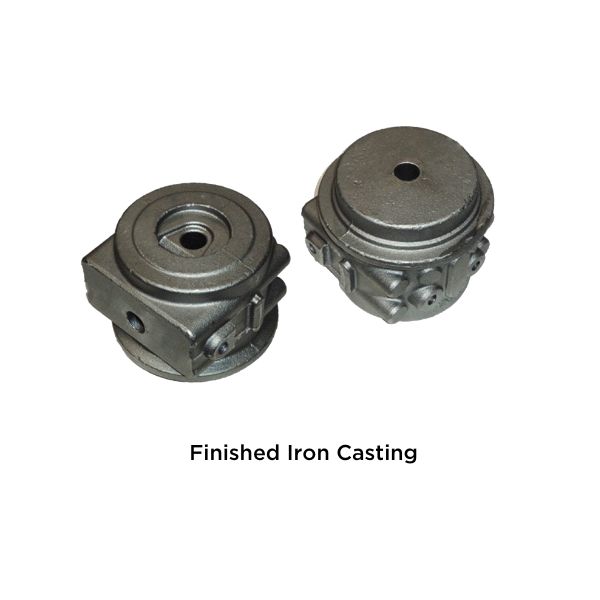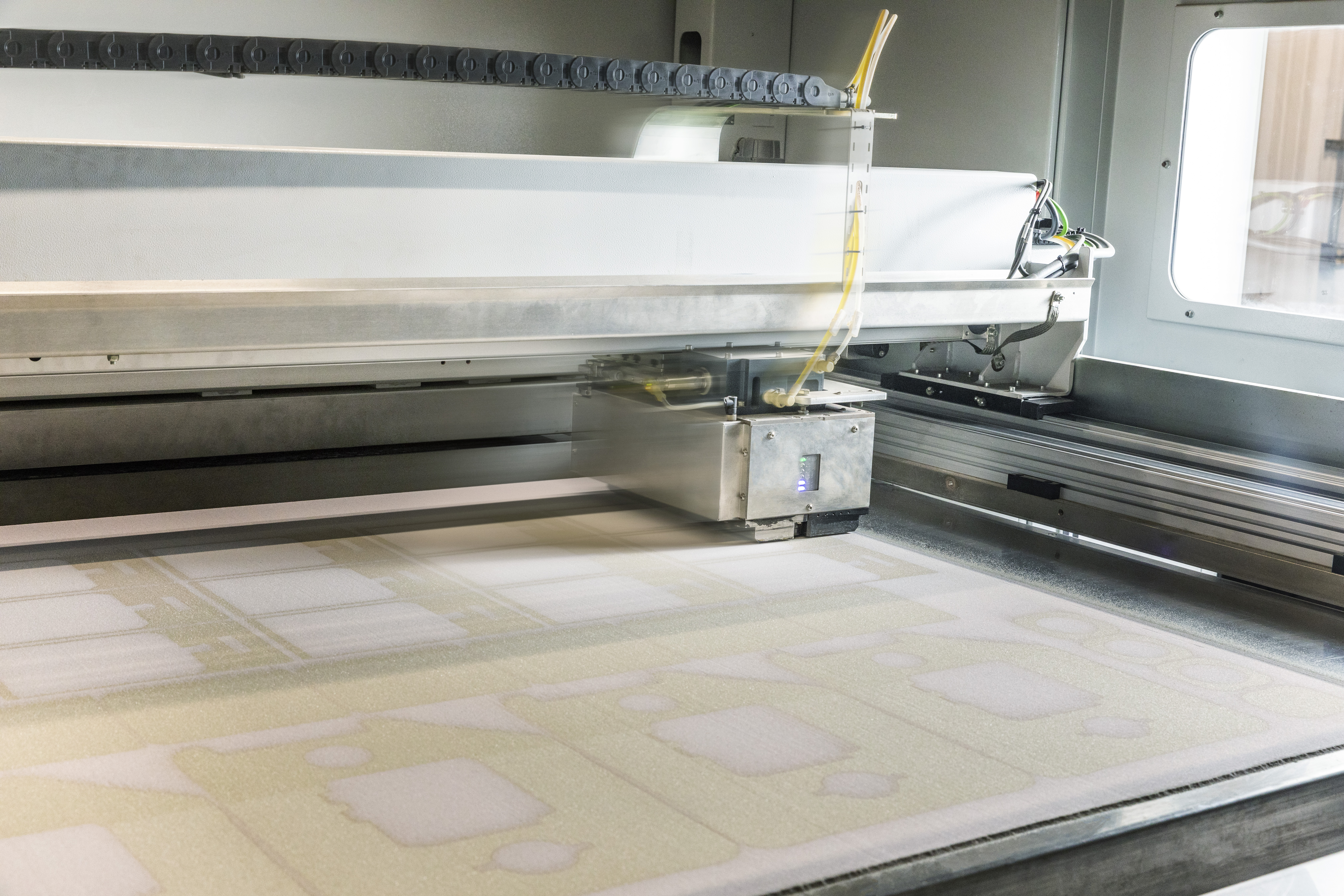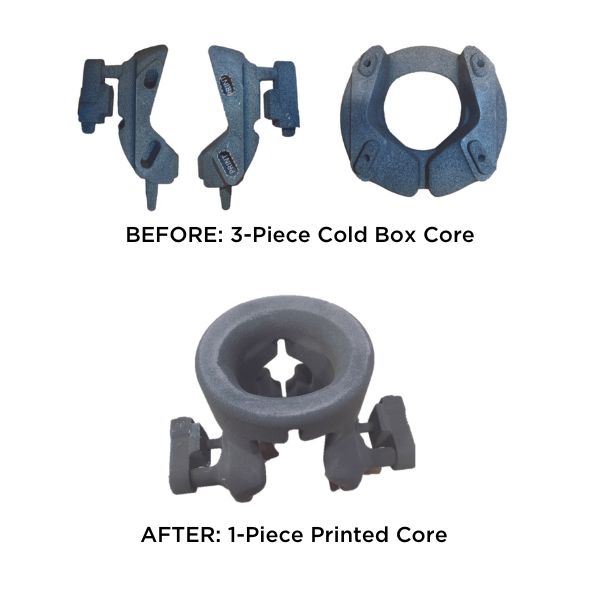
Case Study: Additive MFG
Getting Down to the Core of Additive Manufacturing
Additive Manufacturing, also known as 3-D printing, streamlined casting design to production and revolutionized the way Waupaca Foundry delivered value to its customers and solves supply chain risk. The iron casting supplier installed its first sand 3D printer in 2022 to automate core production and create one-piece complex cores that were once multi-piece assemblies.
A diesel engine manufacturer needed to resolve a safety recall plaguing a turbo bearing housing part with an intricate 3-piece core assembly. Modeling simulations and prototypes confirmed the 3-piece core assembly viable. However, to assemble the 3-piece core, gluing the pieces together was marred with inconsistencies, resulting in seam imperfections and core separation. Excessive flashing caused by the adhesion inconsistencies required extensive manual grinding of the casting that caused even more waste. In all, waste was at 67%.
Waupaca Foundry aimed to reduce waste and boost productivity. A one-piece core was designed and produced, which eliminated all core defects experienced prior to the core redesign. This eliminated the need for assembly, mitigated flashing concerns and reduced processing time.
For added core integrity, Waupaca Foundry utilized ceramic sand versus conventional silica sand. Because silica has a tendency to crack and create veins when subjected to expansion, it was unsuitable for the intricate internal passage within the casting.
Waupaca Foundry utilizes an in-house S-Max Pro from the leader in sand 3D printing solutions, ExOne, to automate the core production process and create complex core assemblies as single pieces. This provides added value by solving quality issues and eliminating supply chain instability.


.jpg)
The one-piece, 3D printed core reduced core waste to a remarkable 0.96%.
3-D printing provided a significant reduction in flashing, manual grinding hours, and scrap waste, as well as enhanced product quality and on-time delivery. The inherent advantages over traditional hard tooling in this application were just as impressive. It required very little setup with only a few parameters needing to be input into the printer prior to printing. With 600 castings annually, it proved to be cost-effective.
- Simplified the core from 3- to 1-piece solution
- Reduced core-related scrap in the casting to less than 1%
- Reduced manual material handling
